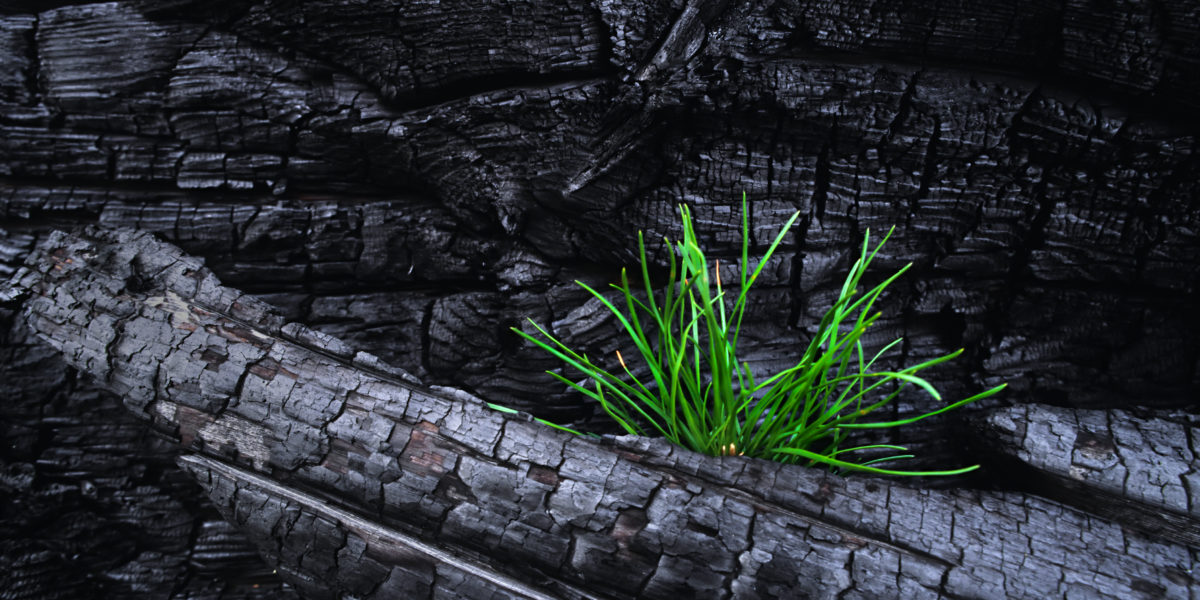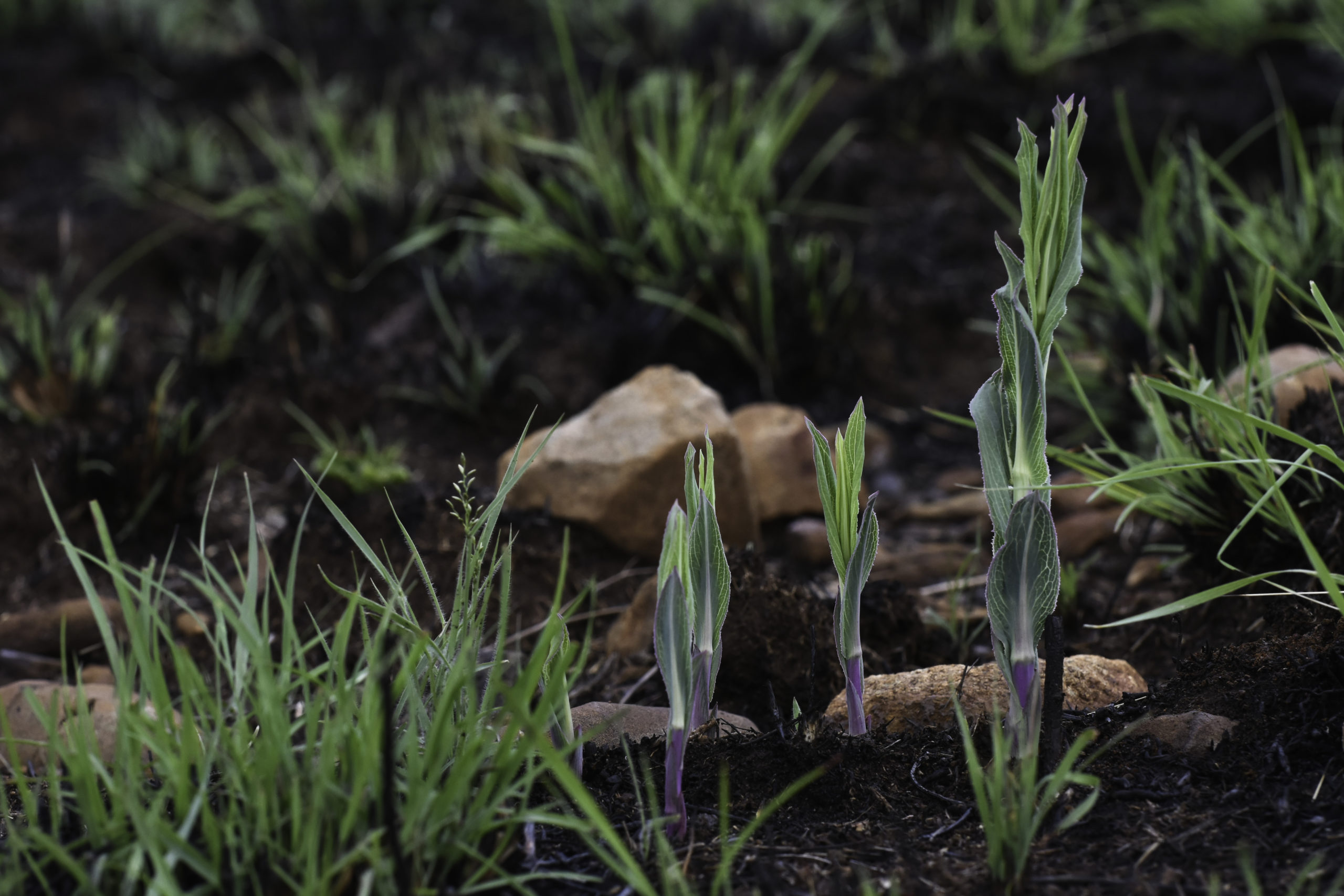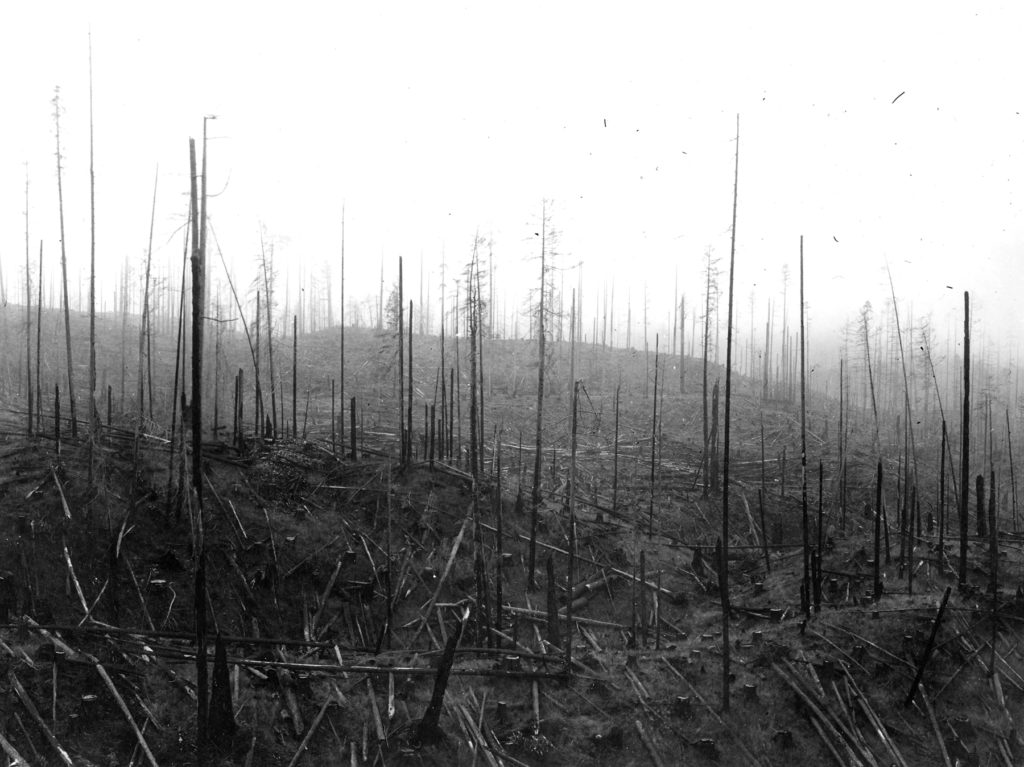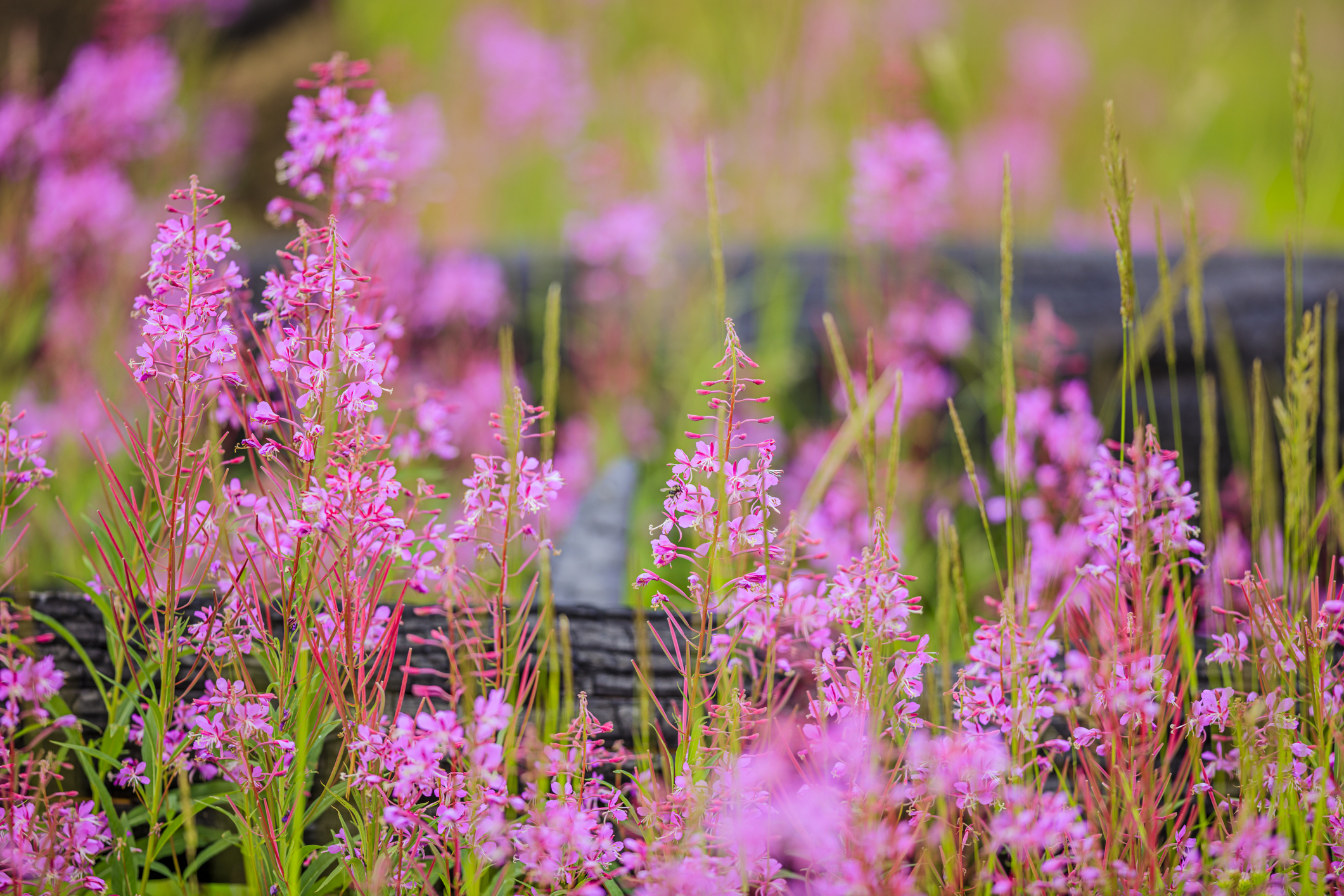
The West Had a Fiery Summer and Fall. How Will Plants Rebound This Spring?
Like a phoenix from the ashes, many plants are reborn after a blaze

Photo by Lawrence Sawyer / Getty Images
Between the California fires over the past few years and the more recent/current cataclysm in Australia, there’s a reason why firescaping is a hot gardening trend we’re predicting for 2020 (pardon the pun). Our global climate is rapidly changing, and not to put too fine a point on it, but Mother Nature seems to be taking an increasingly direct approach to sloughing us all off like a bad case of psoriasis.
It’s not all catastrophic for our leafy friends, though; some plants thrive after fire. A new study published in the Proceedings of the National Academy of Sciences this week found that wildfire vastly improved reproduction in narrow-leaved purple coneflower (Echinacea angustifolium), a widespread prairie plant that’s been in decline in its native populations. The species has had some challenges with “chronically limited mating opportunities” (if you’re a flower that’s pretty far from your neighbor and bloom only sporadically, it can be tricky to get pollinated). Fire hits the reset button, it turns out, leading to synchronized blooming and nearly double the seed production. And many other plants respond with similar enthusiasm.

Photo by JJ van Ginkel / Getty Images
For millennia, Native Americans managed the wildlife in their hunting grounds by utilizing controlled burns — setting mild, brisk fires to clear dead grasses and stimulate new growth, which in turn invited back grazing mammals like elk, deer, and antelope. Before fire suppression efforts changed the ecology, summer lightning started similar fires that maintained healthy prairies and in forests, cleared out brushy understories before they could accumulate into hazardous fuel loads. Fire ecology has shaped the structure of plant communities since time immemorial, long before human hand came into play; in the West, Europeans attempted to alter this for a couple centuries, removing fire from the ecology wherever they settled. But that’s never stopped Mother Nature from lighting back up.
So what should we expect in the growing season following a summer on fire? It depends; so-called “r-selected,” or pioneer, species like fireweed, foxglove, and bracken fern come in fast in a burned (or logged) forest— these are species that grow and bloom fast; they produce tons and tons of seed, which can either blow around to new places (like in the case of fireweed, which will blanket an area with its downy floof), or go dormant until the next big event comes in and clears away the competition (like the aforementioned coneflower, and balsamroot). These plants thrive after fire.
Conversely, the “K-selected” species, with their propensity for lower reproduction rates, lower density, and longer lives, (e.g., later-succession species like some conifers) are the plodding old timers of the ecosystem. These Johnny-come-latelies take longer to reenter the picture, and once they arrive, they grow and reproduce slowly. In forest ecosystems, the vegetation response to logging is often pretty similar to that of fire (though because of the fresh ash, plants grow better after fire).

Trees, the Ancient Ones of the plant kingdom, also typically get back up and brush themselves off, albeit on a different temporal scale than their r-selected cousins. Remember, out here in the West, fire is normal; it is one of the seasons, and forests are patient. It can look tragic and devastating to us humans to see a freshly burned forest, but the forest sees it more like a bad haircut — a temporary setback that will, bless, eventually grow back.
The Tillamook State Forest was burned to smithereens during a twenty year period that spanned World War II, in an event known as the Tillamook Burn. In the late 1950s, my dad’s Boy Scout troop was among the thousands of Oregon youngsters who replanted a million seedlings during the reforestation effort. Though their actions can be wantonly destructive with minimal effort — the 2017 Eagle Creek fire was started by teenagers tossing illegal fireworks into the Gorge during a burn ban, for example — human children are feeble at remediation on the ecological scale; the forest is still in recovery more than 80 years later, and it will be centuries before it’s back to anything resembling its pre-burned state. But the forest doesn’t mind. It has time in spades, and doesn’t care much about the impatience of humans.
In fact, researchers now know that it’s not just that plants survive after fire; the entire ecosystem borne from fire is often even more productive than its old growth progenitor, and not just because it’s now populated by bright, scrappy survivors rather than wet, wooden golems (as majestic and awe-inspiring as said golems are to behold). Some trees — pines and sequoia, namely — have seeds that can’t even germinate without being exposed to fire. Their cones, too, are serotinous; that is, they remain clamped tightly shut like a clam until the flames’ heat coaxes them open to release their seeds.

Photo by Don White / Getty Images
Weeds are just any plant we don’t particularly want in the place they are, but the way they behave is pretty close to a lot of wildflowers — and vice versa. Weedy wildflowers like fireweed and opportunistic nitrogen-fixers like lupine, vetch, and avens sweep in take up residence, quickly settling things down and holding the soil in place so it (hopefully) can’t all blow or wash away. In grasslands and chaparral (and given good winter rainfall), the ensuing superbloom can be a breathtaking way to see plants after a fire.

Photo by corfoto / Getty Images
Fire hurts many plants, but mushrooms spend most of their time under the soil surface, hiding out in vast mycelial networks that make the internet look like cat’s cradle (some people call this network the Wood Wide Web). In forest plantations, chanterelles fruit when the stand reaches 10-40 years of age, but in dry years they do well in the accumulated dampness of a mature forest. They’re more abundant after a hot summer, and seem to disproportionately favor the hardscrabble life on the edges of abandoned logging roads and old skid trails. They’re rather facultative in their tolerance of a ruckus.
Morels even more blatantly favor drama, thriving on tree death, soil disturbance, fire and perdition. (To wit, I once received a delivery of free wood chips from the City of Portland’s street tree-trimming and the following spring my urban garden was covered in little blond morels.) Morels exhibit a lavish, almost obligate response to fire, flourishing most in the springtime after a fire has cleared an area and augmented the soil with carbon. Some species will only grow for a year or two following fire, then patiently wait for the next ecological tantrum before peeking back out. The removal of nitrogen and deposition of carbon—both of which fire accomplishes handily—are key to a mushroom’s happiness. That said, in events where a fire’s intensity was very high (like the eruption of Mt. St. Helens), it can take a century for the heat-sterilized soil biome to rebuild.
Flames and blazes are dangerous, yes, and can be devastating to animals, human and non-human. But the ever-adaptable plant kingdom takes it all in stride, and witnessing its comeback might just start a flame in your heart.
Portions of this story originally appeared on Fish & Game Quarterly
